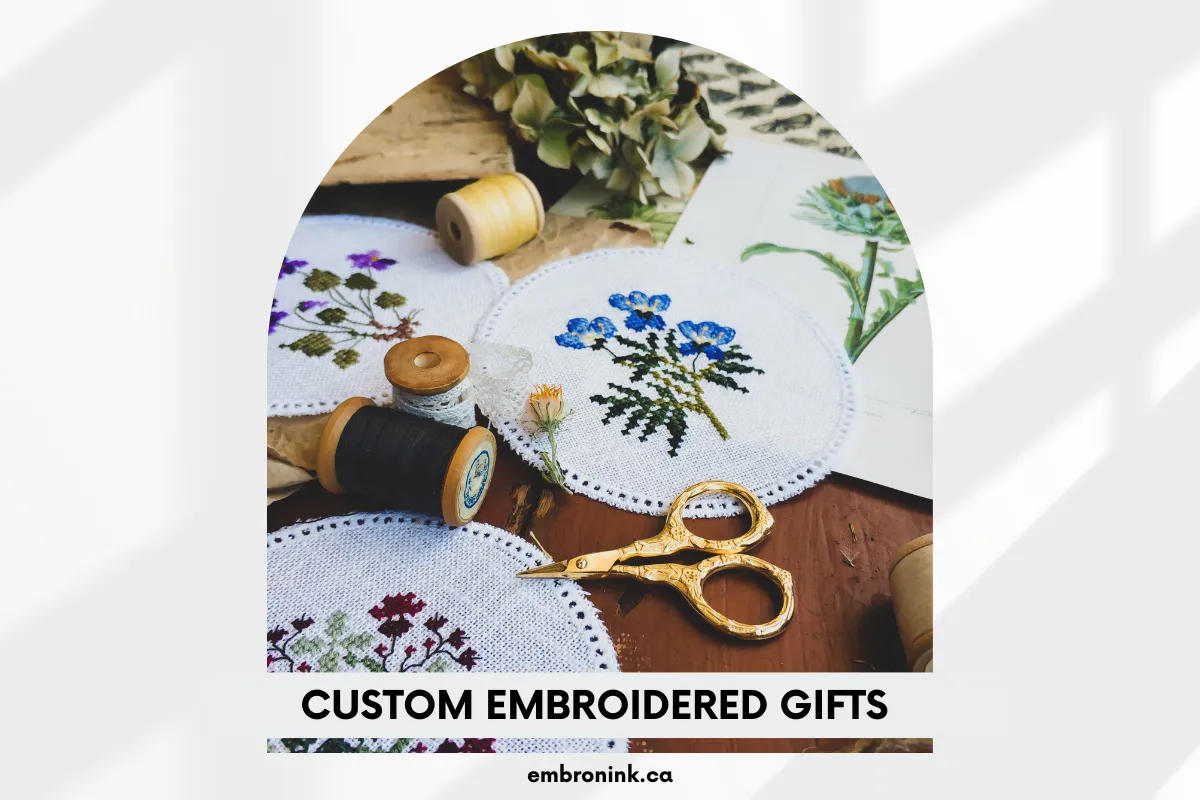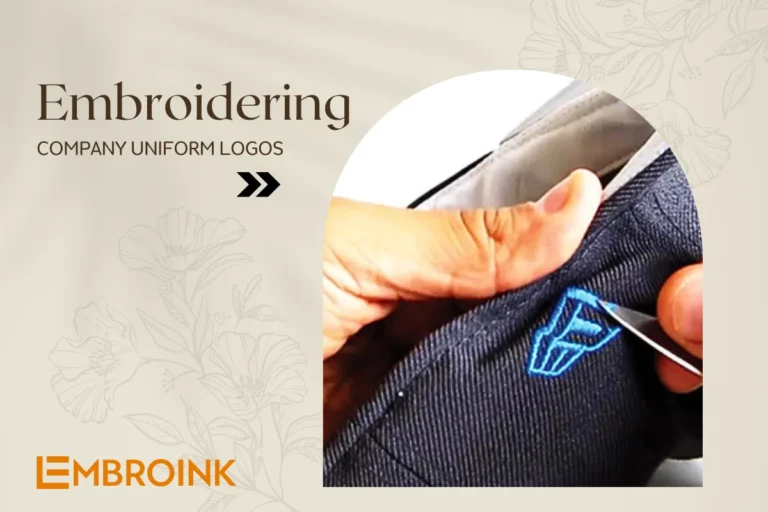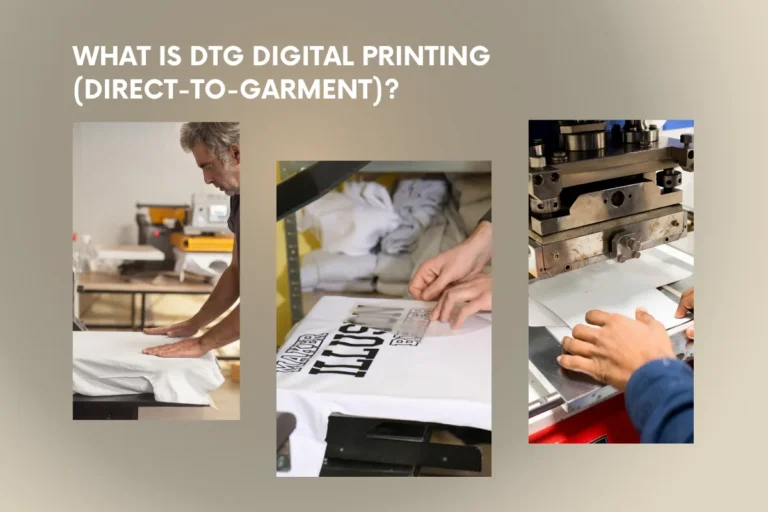10 basic embroidery stitches you need to know
In reality, there are hundreds of different hand embroidery stitches. If you’re just starting out, it can be overwhelming to learn them all at once. EmbroInk has compiled the 10 most basic embroidery stitches for you to practice and begin your embroidery journey.
What is hand embroidery?

Hand embroidery is a handicraft where artisans use a needle and thread to create patterns, images, lettering, or designs on fabric, paper, or other materials. The process typically involves using various types of stitches to create seams, accents, and intricate details, resulting in unique and visually appealing handcrafted pieces.
Hand embroidery offers numerous benefits, including:
- Entertainment and relaxation: Embroidery is a creative activity that helps reduce stress and provides relaxation.
- Development of hand-Eye coordination: The process of hand embroidery requires focus and hand-eye coordination, improving manual dexterity.
- Creating unique handmade items: By using different stitches and threads, you can create unique and personalized embroidered pieces.
- Encouraging creativity: Embroidery encourages the development of creative ideas and design skills.
- Preserving and recycling clothing: Hand embroidery can be used to mend or redesign old clothing, promoting sustainability and environmental awareness.
- Expressing culture and tradition: Embroidery is an art form deeply rooted in culture and tradition, helping to preserve and promote cultural heritage.
- Community and communication: Embroidery can create opportunities for social interaction and connection within embroidery communities through learning and sharing experiences.
- Boosting confidence: Completing embroidery projects can enhance self-confidence and personal satisfaction.
In summary, hand embroidery is not only a craft but also brings many benefits to mental health and creative skills for everyone.
10 basic embroidery stitches you need to know
Running stitch

The running stitch is the simplest and most straightforward way to sew a basic straight line. Essentially, it involves bringing the needle up at point A and down at point B. While this stitch may not seem particularly impressive, it actually serves as the foundation for many decorative border stitches and can be used as an ornamental element in embroidery patterns.
How to perform the running stitch
- Step 1: Bring the needle up from the underside of the fabric at the starting point (point A).
- Step 2: Insert the needle down into the fabric at the ending point (point B) to create the first stitch.
- Step 3: Bring the needle up from the underside of the fabric at the next point (point C), which is a set distance from point B.
- Step 4: Insert the needle down at the following point (point D), and continue repeating these steps to form a straight line of stitches.
Stem stitch
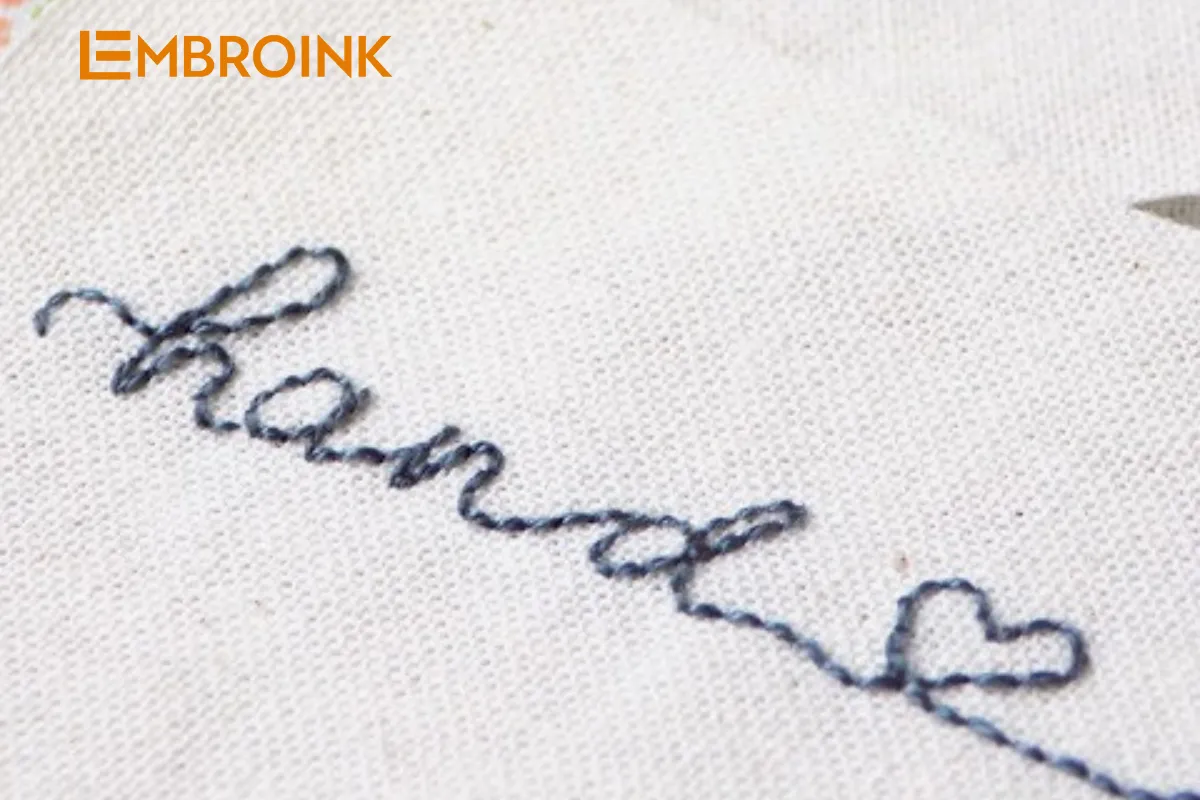
The stem stitch is a fundamental embroidery stitch essential for hand embroidery. Stem stitch is commonly used for stitching flower stems, outlining designs, and creating decorative borders. I recommend researching stem stitch thoroughly, including its variations and terminology, as you may encounter these techniques throughout your embroidery learning journey.
Back stitch

The back stitch is one of the most fundamental and widely used stitches in hand embroidery. Due to its flexibility and ease of execution, this stitch can be applied in various situations, from stitching straight and curved lines to lettering and filling in gaps within embroidered designs.
To perform the back stitch, you will need an embroidery needle, thread, and fabric. Here are the basic steps:
- Step 1: Bring the needle up from the underside of the fabric at the starting point.
- Step 2: Move the needle forward the desired distance, then insert it back down into the fabric.
- Step 3: Bring the needle up from the underside of the fabric at the next point, ahead of the initial starting point by the same distance chosen in Step 2.
- Step 4: Insert the needle back into the end of the previous stitch and pull the thread through to complete the stitch.
Thanks to its flexibility and simplicity, the back stitch is a popular choice for both professional embroiderers and craft enthusiasts. This technique not only brings beautiful designs to life but also provides joy and relaxation during the embroidery process.
Split stitch
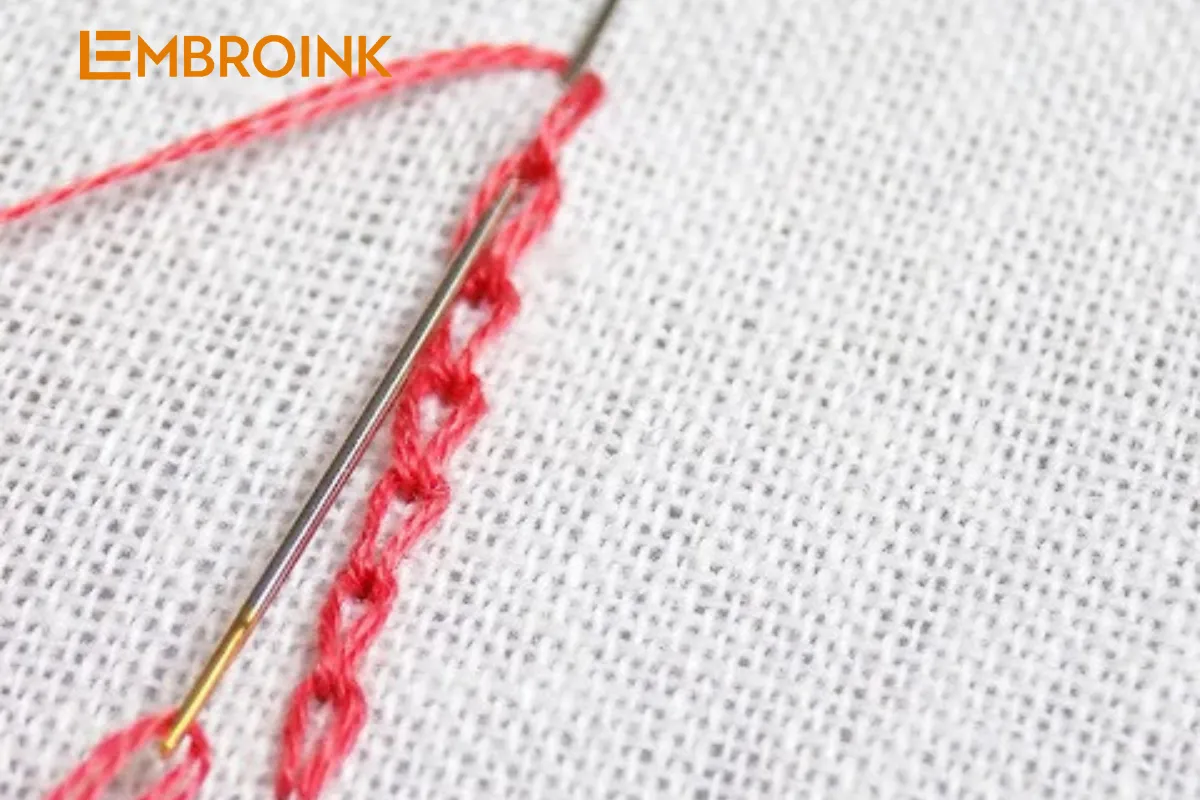
The Split stitch is one of my favorite embroidery stitches because I find it incredibly versatile and convenient for most embroidery designs. It’s well-suited for creating borders, and its thread line looks very graceful when used for filling spaces in embroidery. Additionally, the Split stitch can be used as an alternative to certain other stitches in specific cases.
Chain stitch

The chain stitch is a traditional and versatile hand embroidery technique. Not only is it simple to execute, but it also produces soft and fluid lines, making it suitable for a wide range of designs. Specifically, the chain stitch is ideal for embroidering shapes with many curves, such as lettering, borders, and decorative elements.
To perform the chain stitch, you will need an embroidery needle, thread, and fabric. Here are the basic steps:
- Step 1: Bring the needle up from the underside of the fabric at the starting point.
- Step 2: Insert the needle back down near the starting point, leaving a loop of thread on the surface.
- Step 3: Bring the needle up through the fabric at the next point, keeping the loop of thread under the needle.
- Step 4: Pull the thread to form a chain loop. Continue these steps to create a series of consecutive chain loops.
Thanks to its flexibility and ease of execution, the chain stitch is a top choice for both professional embroiderers and craft enthusiasts. This technique not only brings beautiful designs to life but also provides joy and relaxation during the embroidery process.
French knots
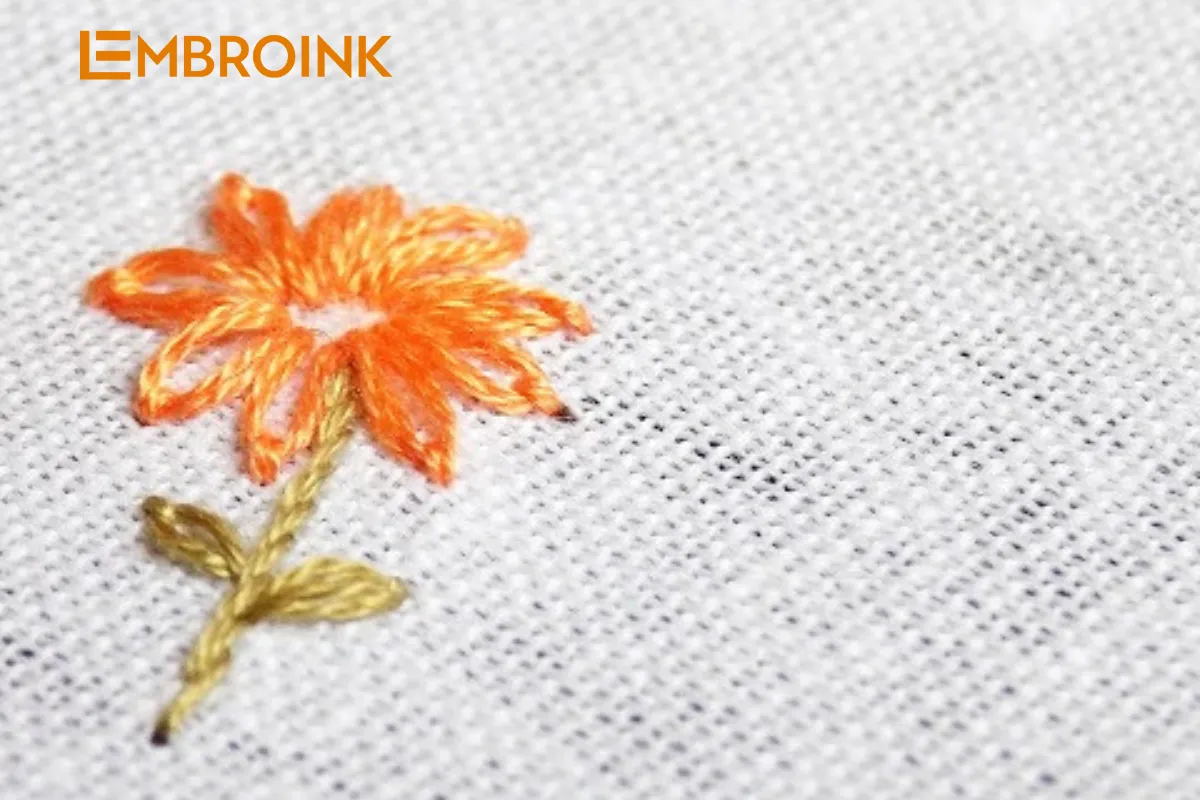
French knots are arguably one of the most basic embroidery stitches in hand embroidery. They have a wide range of applications, such as stitching small flowers, creating stamens, adding decorative elements, and filling in empty spaces. The size of the French knot can vary depending on the number of threads and the number of times the thread wraps around the needle.
Lazy daisy
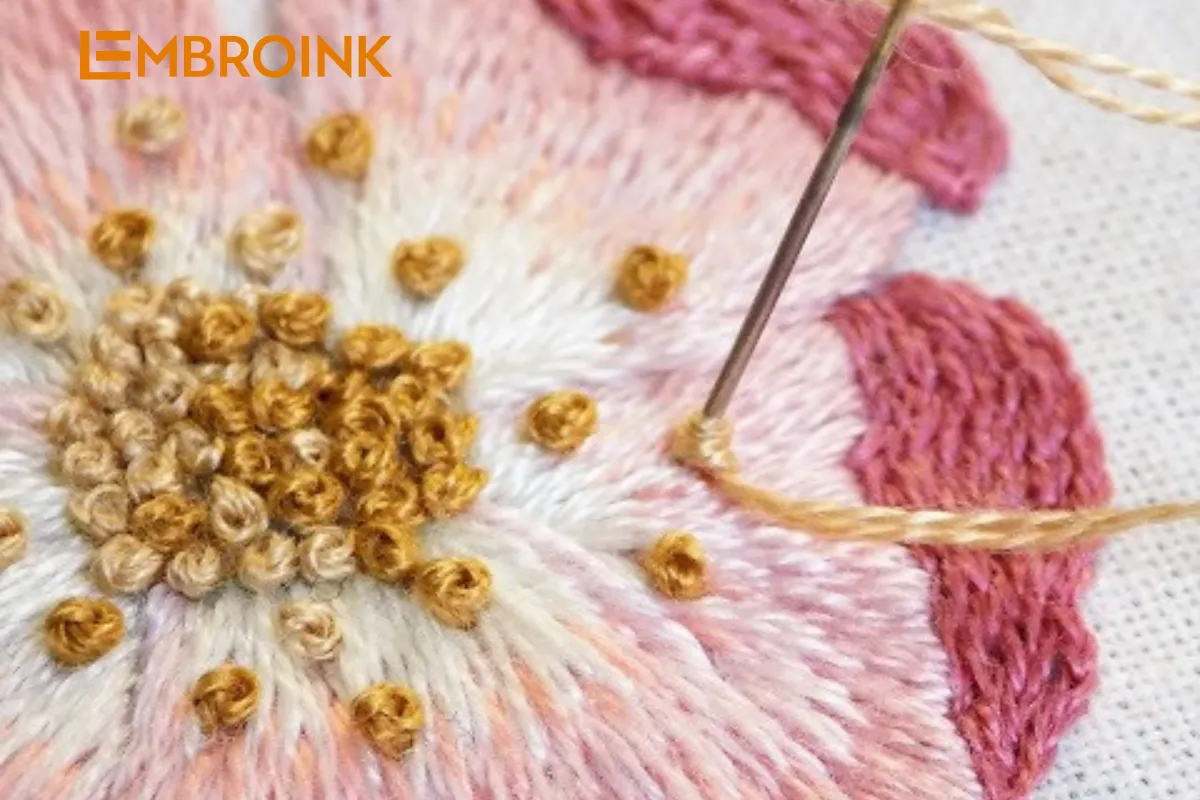
The lazy daisy stitch is one of the easiest and most versatile basic embroidery stitches today. As shown in the example below, you can use the lazy daisy stitch to create both leaves and petals of a flower, as well as add stem stitches or any other embroidery lines for the flower stem.
Buttonhole stitch
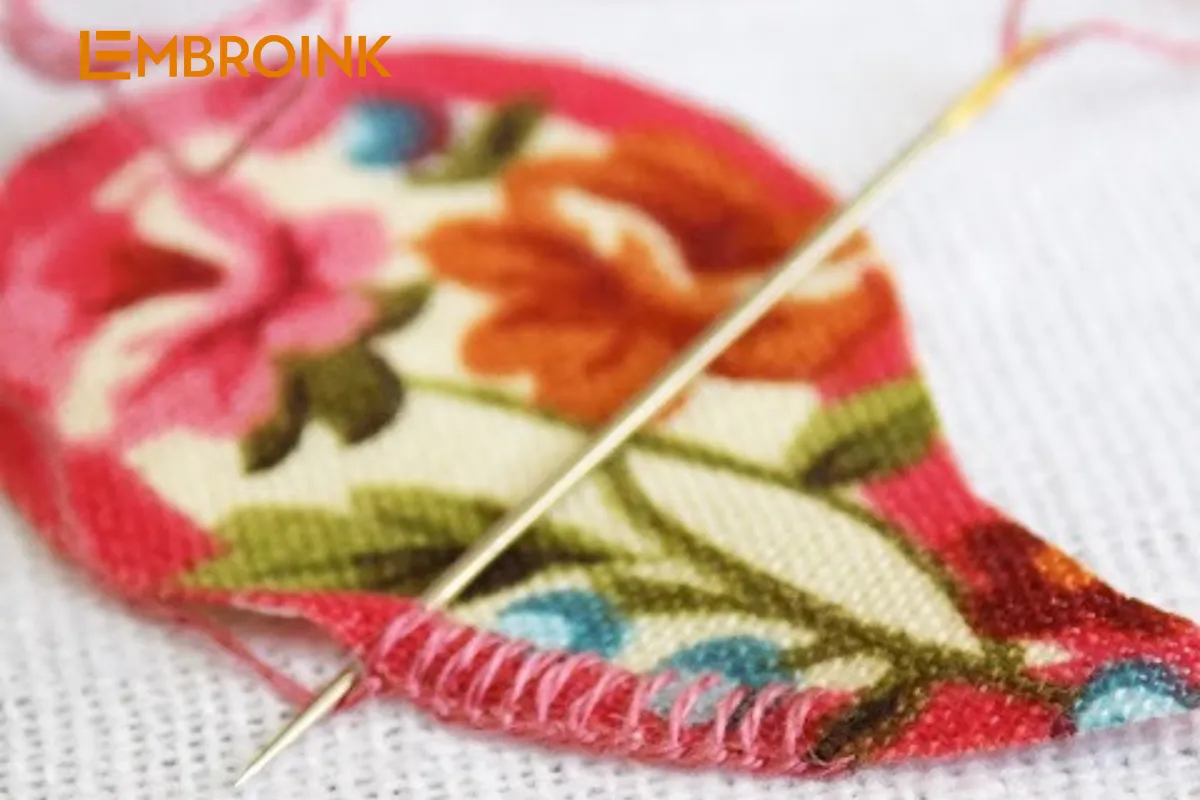
The buttonhole stitch is not one of the easiest embroidery stitches, but it is considered one of the most practical. You can use the buttonhole stitch for edging, mending holes in clothes, sewing felt, attaching beads, filling shapes, creating borders, and more.
Satin stitch
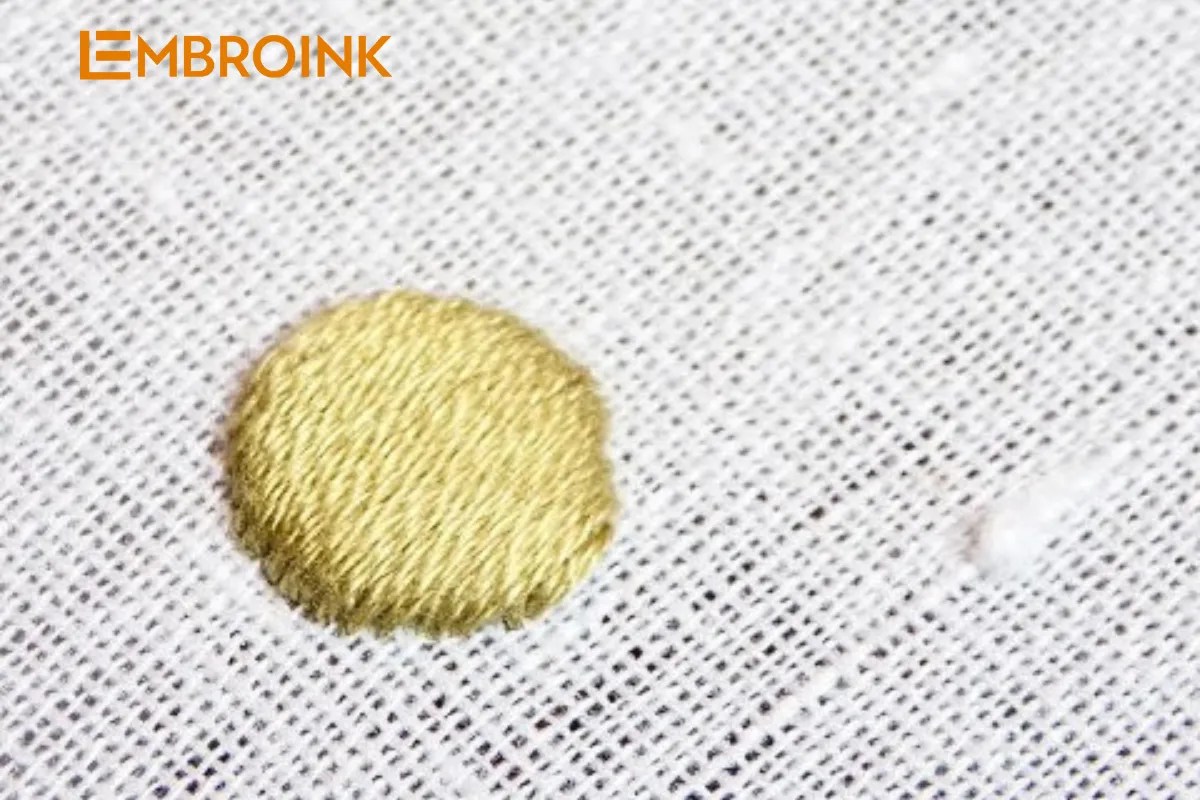
The satin stitch is a technique used to fill a shape with straight, parallel stitches. It looks fantastic when executed precisely with stitches slanting at the same angle, creating a smooth and shiny effect. Additionally, you can use padding to give the satin stitch a slightly raised appearance.
Long and short stitch
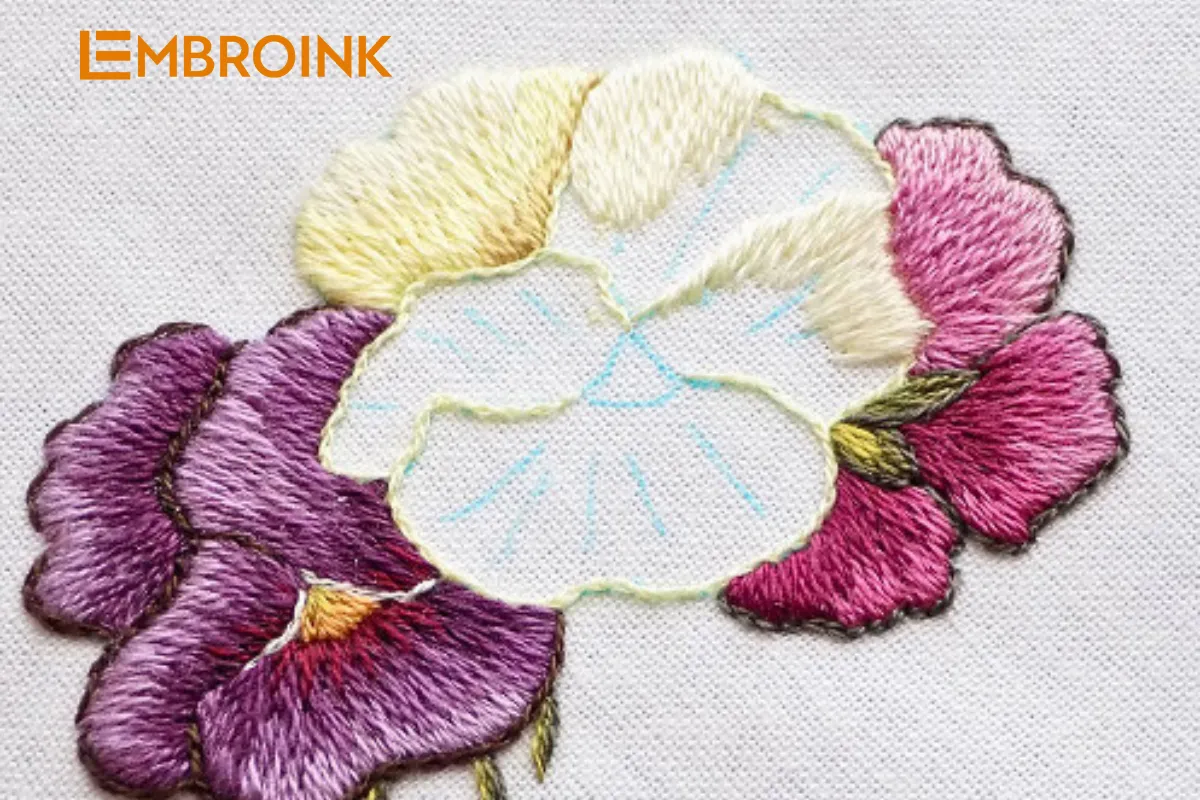
The long and short stitch is ideal for filling in larger shapes that require color blending or shading, such as a cherry on a cake. This stitch allows you to vary the length of your stitches, creating a beautiful gradient effect. While satin stitch works well for smaller areas up to about 1 cm, long and short stitch is essential for larger areas where color blending and shading are crucial for achieving a realistic or artistic effect.
The long and short stitch may seem complex and can indeed be at a different level. However, you can learn to embroider it even as a beginner.
Custom embroidery on demand at Embroink
Embroink is a reputable provider specializing in high-quality embroidery services, catering to a wide range of customer needs. The embroidery services at Embroink include:
Embroidery from existing designs
- Traditional designs: Embroink offers traditional embroidery patterns that reflect the rich cultural heritage of various regions. These designs can be applied to items such as áo dài (traditional Vietnamese dress), scarves, and other decorative objects.
- Modern designs: For customers who prefer a youthful and contemporary style, Embroink provides modern embroidery patterns suitable for fashionable clothing, handbags, and accessories.
Custom embroidery services
- Exclusive designs: Embroink creates unique embroidery designs based on customer requests. You can submit your ideas or images, and the design team will transform them into distinctive embroidery patterns.
- Personalized products: Customers can request personalized embroidery, such as names, initials, or personal symbols, to create unique and customized items. This is an ideal option for special gifts like group t-shirts, scarves, or household items.
Types of products Embroink embroiders
- Apparel: Shirts, t-shirts, dresses, skirts, children’s clothing, company uniforms.
- Accessories: Handbags, shoes, hats, caps, scarves.
- Household Items: Tablecloths, pillows, curtains, towels, washcloths.
- Gifts and Decorations: Embroidered paintings, embroidered cards, souvenirs.
With its wide range of services and commitment to quality, Embroink is not just a provider of embroidered products but a reliable partner in creating items that reflect your personal style and preferences.
Above is a compilation of 10 basic embroidery stitches for those who are just starting to learn. I hope this can provide you with valuable knowledge.

